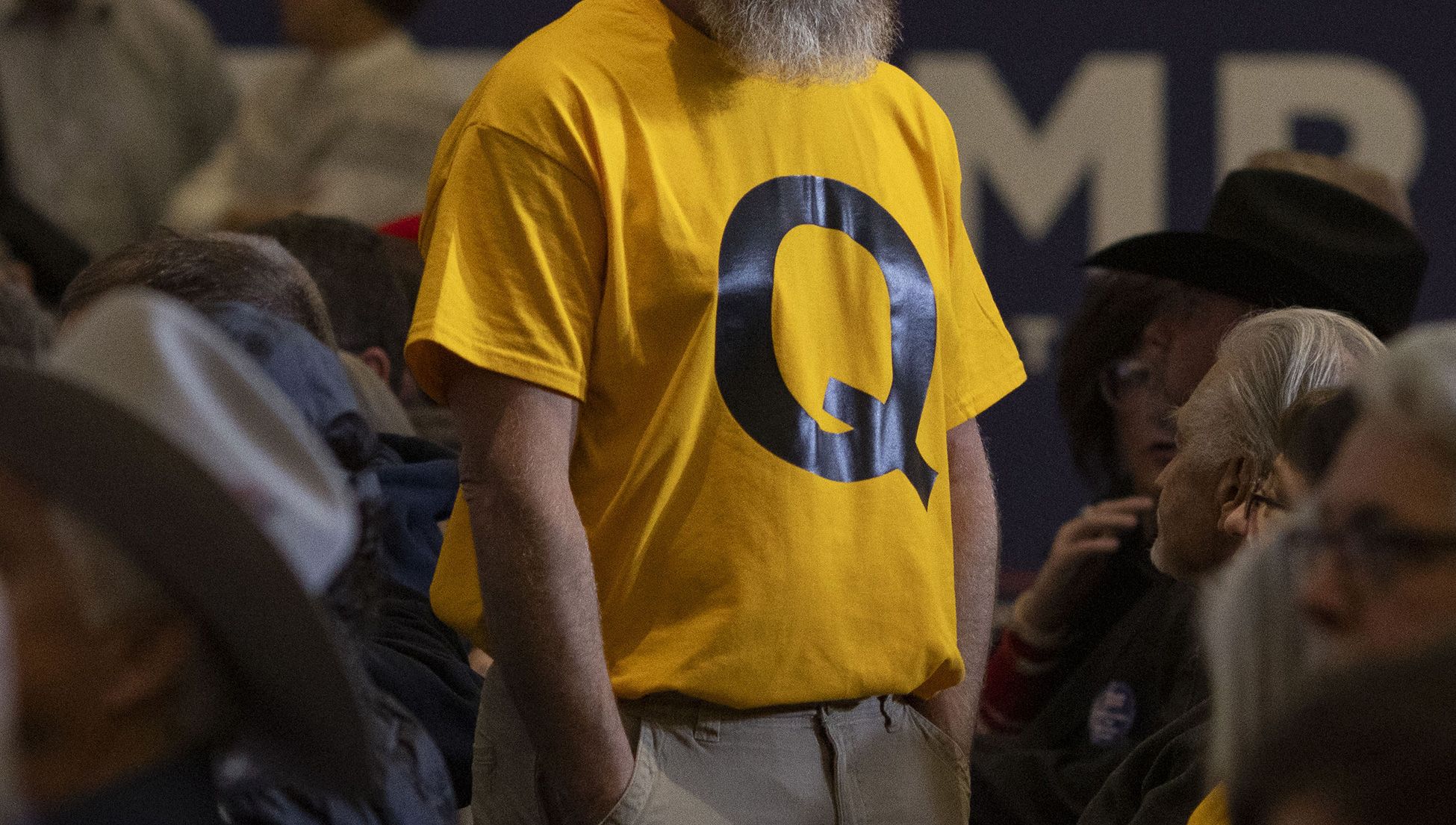People who endorse and spread outlandish theories aren’t gullible, they’re drawn to the intoxicating lure of discovery
Conspiracy theories are seemingly everywhere. To explain their prevalence, many commentators point to the gullibility of conspiracy theorists. According to this view, believers in conspiracy theories accept evidence without bothering to scrutinise its credibility, making them vulnerable to the misinformation that pervades online ecosystems. But while it’s tempting to take this view, we believe it relies on an unrealistic picture of misinformation and the people who consume it – which is likely undermining attempts to deal with the problem.
Far from passively accepting the truth of conspiracy theories, conspiracy theorists enthusiastically participate in generating, discussing and dissecting them. They also appear genuine in their attempts to get to the bottom of things. They develop sophisticated arguments, go to considerable lengths to find the ‘right’ sources of information, and preach the importance of rigorous and independent research. Conspiracy theorists don’t fall for conspiracy theories. They discover them.
Consider QAnon, the US far-Right conspiracy theory claiming that Democrats are involved in child sex trafficking. The theory involves many implausible claims – for example, that Chelsea Clinton is forced to wear an ankle monitor by an organisation dedicated to prosecuting the trafficking ring. You would be forgiven for thinking that anyone who believes them is not thinking hard enough. But QAnon is not just a theory, but a problem-solving community. Cryptic messages (known as ‘Q drops’) launched by the figurehead ‘Q’ and others in the network spur individuals to ‘do their research’, hunting for clues, connections and explanations. It is not just QAnon that features and promotes puzzle-solving. Conspiracy theories surrounding the John F Kennedy assassination, 9/11 and COVID-19 all draw out amateur investigators who pick apart evidence and discover apparent inconsistencies in the official reports of events. These investigators even establish dedicated social networks to share evidence and engage in highly technical debates over inconsistencies in the official story.
This presents a paradox. Conspiracy theorists appear earnestly committed to finding the truth, yet they are drawn to theories that often involve false and implausible claims. We believe that the psychology of insight – especially the rewarding feelings associated with discovery and revelation – can resolve this paradox, helping to illuminate the surprising role that deep thinking plays in proliferating conspiracies.

To get a sense of what we mean by insight, take a moment to inspect the image above. At first, it probably looks like a haphazard collection of black patches. Now look again (possibly after glancing at the undistorted version below) and the solution becomes clear: a frog was lurking beneath the surface. When resolving images like these, people don’t just see the frog. They discover it. This discovery delivers a pleasing sense of insight, the so-called ‘aha’ experience.

The search for insight guides much of human behaviour. People seek out activities that provide this rewarding feedback – in puzzles, games, humour and even scientific research. The act of discovery and the sense of insight it provides strengthens and solidifies people’s beliefs. For example, searching and finding evidence – instead of being given it – makes people more confident that they understand a topic. People also rate statements as more accurate when they include a jumbled word – eg, ‘ithlium is the lightest of all metals’ – which they must unscramble themselves.
That ‘aha’ feeling gave rise to a deeper acceptance of the idea
Anecdotal evidence backs this up. Consider a recent first-hand observation from the Flat Earth International Conference:
At several points during the conference, a speaker would lay out a set of facts or observations that seemed strange or inexplicable and then, with a flourish, would bring everything together, often by appealing to a shadowy cabal at NASA. Such moments were met by audible gasps in the audience as people experienced an ‘aha moment’.
The link between conspiracy theories and insight is also evident in the role that memes play in proliferating conspiracies. Take the example of Melissa Rein Lively – a former QAnon supporter who rose to fame after a video of her destroying a face mask stand at a Target store during the COVID-19 pandemic went viral (anti-vaccine beliefs are a key part of the QAnon worldview). She has cited a particular meme as being pivotal to her journey into QAnon: it features a photograph of Polish Jews being put on a train in 1939, edited so that they wore face masks. Lively – the granddaughter of Holocaust survivors – grasped the implied link between mask mandates and authoritarian injustices, causing her to experience a rewarding sense of insight. Just like participants who are required to unscramble sentences, for her that ‘aha’ feeling gave rise to a deeper acceptance of the idea. As she put it: ‘Everything I was learning and everything I have ever been afraid of connected in a way that convinced me that at least some semblance of what I was reading was true.’
We propose that the hunger for insight and discovery is present in all humans and that engagement with conspiracy theories satisfies that hunger. This helps to explain the attractiveness of conspiracist communities, such as QAnon. These communities offer participation in a collective act of discovery, wherein users aid each other in discovering clues and decoding cryptic messages to generate their own insights. Contrary to the view that conspiracy theorists don’t think hard enough, many conspiracies are popular precisely because they require hard thinking.
This explanation also illuminates a potentially important cause of conspiracy theories – when people feel excluded from the kind of collective discovery that conspiracy theory communities offer. Take the example of anti-vaccine sentiments amongst new mothers. Mothers often feel that their maternal instincts and first-person experience are devalued by medical professionals. Such interactions deny them the chance to experience insight through participating in problem-solving about their children’s health. This ‘epistemic exclusion’ can lead the insight-hungry to seek out alternative views of medicine, often involving conspiratorial elements (centring around cover-ups by ‘big pharma’, for example). Consistent with this, people who reject mainstream medicine in favour of such alternatives often emphasise that they are only exercising their right to engage in their own truth-seeking activities.
Designing effective insight-based interventions relies on getting to know your audience
If we’re right about the role of insight in conspiratorial thinking, governments could apply the psychology of insight to design interventions that better combat conspiracy theories. Up until now a standard approach has been to focus on countering misinformation (through factchecking or providing information that contradicts it). But this treats those who consume misinformation as passive victims, rather than active and enthusiastic participants. It ignores the drive for discovery at the heart of much engagement with misinformation. A better approach is to take the drive for discovery seriously, which will require countering misinformation with the same spirit of intellectual playfulness that draws people to it. For example, interventions could work with engaging questions and puzzles instead of factual statements.
An important step in designing effective insight-based interventions of this kind is simple: know your audience. During the COVID-19 pandemic, the ‘vaccine zombie’ metaphor resonated among the anti-vaccine community because it tapped into the way they thought of vaccine users. Designing a more accurate, but equally attractive, metaphor requires a firm understanding of the beliefs and attitudes of those who believe in conspiracies. Gaining such knowledge relies on getting to know your audience. A relevant distinction is between perspective-taking and perspective-getting – don’t just try to put yourself in someone else’s shoes (perspective-taking); genuinely enquire about how they see the world (perspective-getting). That knowledge can then be employed to connect with communities that believe in conspiracies.
Another way is to represent people’s lived experience. People gain a sense of insight when recognising a link with their personal experiences. The meme that Lively encountered about face masks resonated with her so strongly because she was the daughter of Holocaust survivors – she uncovered a surprising link with her own perspective. This suggests that effective interventions should connect with people’s experiences.
One approach to delivering insight-based interventions could be via developments in AI, which hold the promise of countering conspiracy thinking via personalised interactions. For example, in a recent study, interactions with ChatGPT-4 Turbo substantially and durably shifted the beliefs of even the staunchest of believers in conspiracies ranging from the causes of COVID-19 to the Moon landings to the death of Princess Diana. Analysing these conversations showed that the model didn’t simply present counterevidence but questioned and reasoned with users. Although users were not explicitly asked to report insight experiences, we would venture that such experiences were a crucial mechanism underlying their shift in beliefs.
The mind-changing potential of these systems is bound to continue to grow. They already have more ‘patience’ than any human for gaining our idiosyncratic perspective through dialogue. As they can ingest more information about us, they will be able to simulate our positions more effectively. That will allow them to challenge us at the just-right level – eventually coming up with new, resonating metaphors and pointed questions. We are hopeful that such personal(ised) AI assistants will help to prevent and counter harmful beliefs at scale (but they will need to be implemented carefully, given the risk of misuse).
Conspiracy believers are not unintelligent and gullible. They are driven by their hunger for insight. Whether via AI or other media, recognising and respecting this hunger is the way towards more effective interventions.

